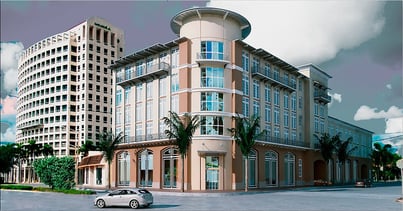New York, so often a leader in culture and technology, is also showing up as a leader in the movement towards greener buildings, efficient energy use, and decreased carbon emissions. Implementing smart building technology in commercial real estate is now allowing many building owners to save money on their utility bills, while fostering sustainability and decreased reliance on fossil fuels.
In 2010, the Steve L. Newman Real Estate Institute of Baruch College in New York City published this article about the burgeoning case for smart technology in commercial buildings. The article focuses on the significant rises in efficiency that occurred when building residents and users gained access to real-time information on their utility usage via the web. Cloud-connected smart technology in building utilities has continued to expand in New York, and other states, since this publication. Its findings are still highly relevant for those of us considering the idea of implementing smart metering in commercial buildings.
Implementing Smart Building Technology: A Case Study
Limited Brands, with a building space occupying 350,000 square feet in Manhattan, implemented a new web-based energy management strategy in 2010. The Department of Facilities Planning was hoping that access to real-time usage data would help them identify ways to raise building-wide efficiency. The building implemented a web-based user interface that allowed anyone accessing it to see fine-grained data for utility usage, as well as real-time shifts in energy cost.
According to the article, here's what they noticed immediately.
“With the ability to see trends in usage on both an hourly and daily basis, the team tested their energy reduction ideas. The real-time energy data feedback provided by theEIP [energy tracking software] allowed them to make immediate changes, including adjusting temperature settings and reducing the number of active HVAC units in the main server rooms; raising temperature settings in all conference, IDF and presentation rooms, changing auto light-timer on/ off settings for weekday and weekend times, and shutting down specific areas of lighting in the building. Savings were seen within hours by viewing the EIP system data recording.”
With the upgrades to efficiency made after implementing the new system, Limited Brands was able to save about 2,000 kWh on weekdays, and more on weekends. This accumulates to energy savings of 730,000 kWh a year, a 15% reduction in energy consumption and a reduction of 524 metric tons of carbon emissions.
Speaking of Limited Brand's future plans for energy conservation, the author writes,
“Limited Brands plans to use the system to monitor and expand their understanding of usage, floor by floor, to help identify floors and/or activities that are driving higher usage and believe that they will identify other opportunities to reduce usage. Any opportunity to save money on energy usage is a benefit for the environment and the Limited Brands’ shareholders. They view this as being about smart facilities management and sustainable improvement, allowing for resources being used to better serve the customer.”
Cloud-connected technology helps buildings get greener and save money.
Limited Brands was able to reduce its energy use through the development of smarter systems. Using smart metering to see where unnecessary use was occurring, facilities planners were able to make rapid changes, then get immediate feedback about the impact of those changes. Access to real-time usage data doesn't, by itself, make a building more efficient. What the data does do is provide a map for facilities personnel to create more efficient systems.
It's time for building owners everywhere to get serious about reducing waste and inefficient energy use.



